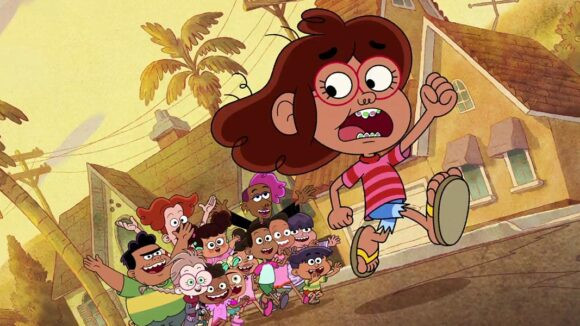
Natasha Kline has the perfect summer show for kids and families, and truth be told, it’s really an autobiographical taste of her own childhood growing up in Southern California. Primos, which debuted this week on Disney Channel, is Kline’s first original animated children’s series. It captures the whimsical and maddening fun of trying to co-exist inside a large extended family, under the same roof, all summer long.
Disney Television Animation’s Primos is from the perspective of a 9-year-old (almost 10!) Tater Ramirez Humphrey (Myrna Velasco) who just wants a quiet summer to write in her diary and dream big about her future self. However, Tater’s “Me Party” summer is crushed when 12 of her cousins arrive for a family bonding experience with her bedroom serving as cousin central.
serving as cousin central.
For the last decade, Kline has worked professionally in various capacities as a director, storyboard artist, character designer, and writer on animated series such as South Park, Home: Adventures of Tip & Oh, and Big City Greens. With Primos, she gets to tell the story of her own Mexican-American heritage and the chaos of family.
Cartoon Brew recently spoke with Kline to find out how she was able to bring this series to life. New episodes air weekly at 9am Saturdays starting tomorrow.
Cartoon Brew: How much of Primos is taken from your own childhood?
Natasha Kline: It came from a very authentic place, because Tater is me, honestly. I was surrounded by kids all the time. I was in the middle of all the primos so I was lucky that I had older primos.
How did your original series idea evolve during the development?
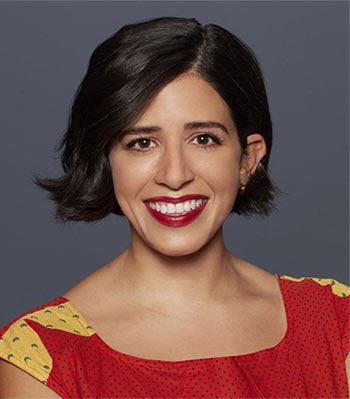 Natasha Kline.
Natasha Kline.
Kline: Honestly, in development, the very first pitch packet I made was pretty close to what the series ended up being. I’m very lucky. I feel like Disney trusted my vision from the beginning. And especially because it’s based on my personal childhood, things didn’t really change too much. Tater was always Tater. From the very beginning, she was always a big dreamer, an introvert, and wanted time to herself. She had 11 cousins initially, so I added one more. Twelve just feels like a better number than 11. It’s a good dozen doughnuts.
When we went into production, it was really fun to flesh those characters out and just add even more layers than I thought were even possible. We have like 58 episodes, with two elevens each. That’s a lot of storytelling. We tried to portion it out so that every cousin gets highlighted. It’s been exciting to be able to build layers into characters that were initially kind of flat in the development packet.
How much did the show’s 2d aesthetics evolve?
Kline: The look really transformed a lot. My natural style as a storyboard artist is way more rough around the edges. My very first drawings of the characters were not super polished. I remember Tater had a really huge nose based on myself, as I always feel like my nose sticks out. I remember that was a funny note that I got. It was like, “So Tater’s nose…do you think maybe we can make it a little bit cuter?” And I was like, “Alright, Disney!”
It was really fun to explore different visions of it. It was even [more fun] to be able to bring in real artists who could help develop the background style, too. Everything kept building on that initial nugget of an idea.
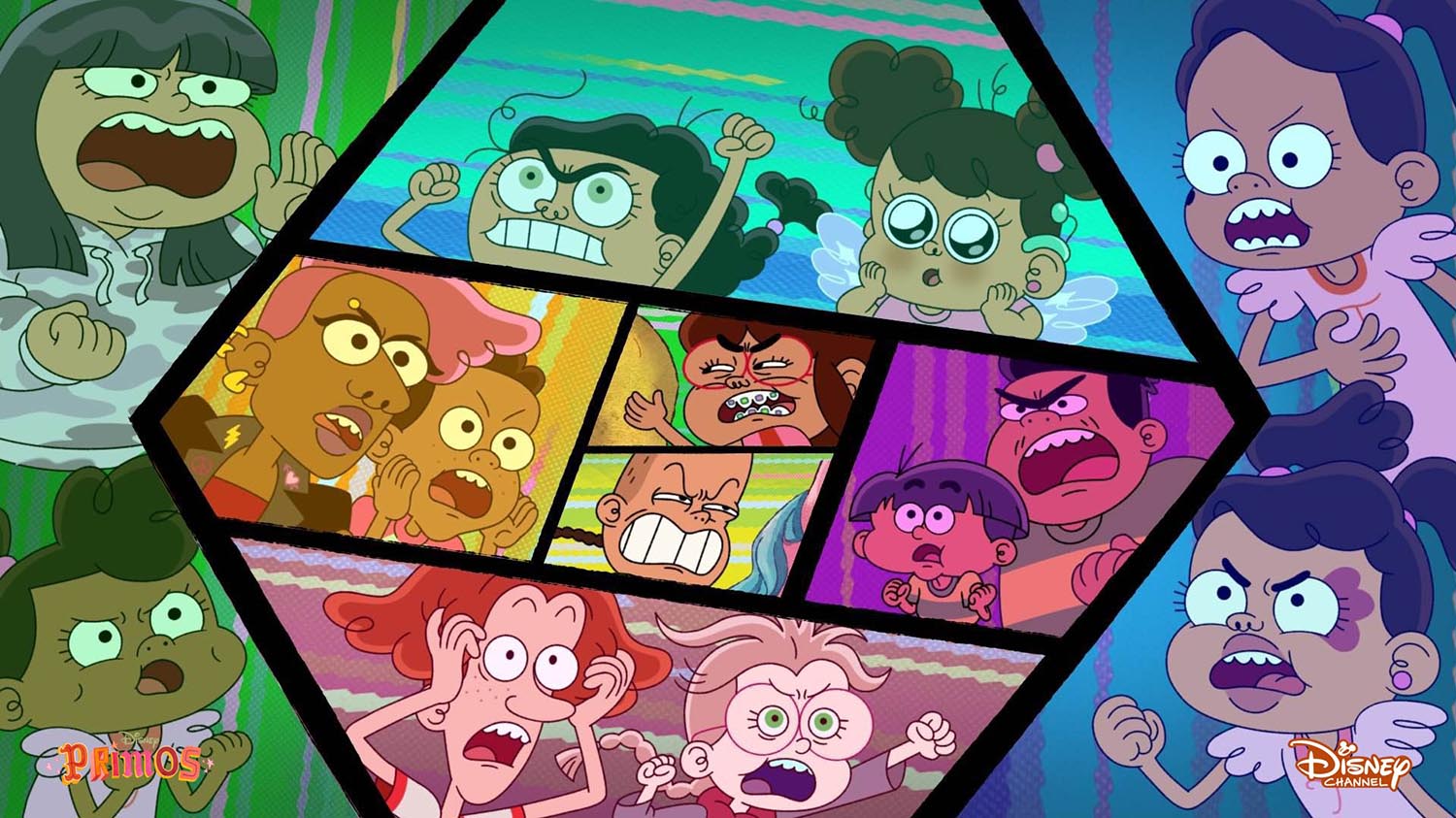
Primos features original songs for multiple musical sequences. For a freshman series and a first-time showrunner, was that aspect daunting to achieve?
Kline: I love music. As a storyboard, I worked on Home: Adventures with Tip & Oh, which was really fun. I actually got to write lyrics for that show. And when Big City Greens started incorporating music, it was always a joy to be able to direct certain musical sequences. And honestly, the very thing that inspired me to be an animator was music videos. I saw Tom Petty’s “Running Down a Dream” which is just such a great video. It captured my imagination when I was very, very little. So it’s always been in my head that I wanted this to be a musical show.
And that’s woven into the fabric of my family too. All of my family members play musical instruments. We’d have big family parties where one of my tíos was on a bongo and my other tío was playing the trumpet. We used to play music together so I always wanted to have that just naturally be woven into the show.
How did you parse them out to make it achievable for a tv pipeline?
Kline: Production-wise, songs are really hard to produce. They’re hard to storyboard. There’s a lot of action in them and a lot of movement. You have to do stuff to the beat of the music. It’s big for the animators. It’s big for the timers. It’s big, all the way down the pipeline whenever you want to create a song. So I tried to partition them out. I didn’t want it to be every single 11 [minute episode], because I wanted to give production a little bit of a break. We tried to aim for like every half hour. There are a couple half hours that are missing a song because that’s literally when everybody started getting a little bit tired. So I was like, “Okay, maybe we won’t do a song this half hour and just give everyone a break.” And we do have a clip show, which recycles a lot of the songs in season one so that gives everybody a break, too.
I was always trying to create these songs with the goal of not completely exhausting my staff. As a storyboard artist, I’ve understood the kind of strain that that creates. There’s just a lot to produce. But at the same time, Alana Da Fonseca, our songwriter, was writing these killer songs, and it’s gonna be worth it. And I think that everybody did see that. They saw the value of being able to create that.
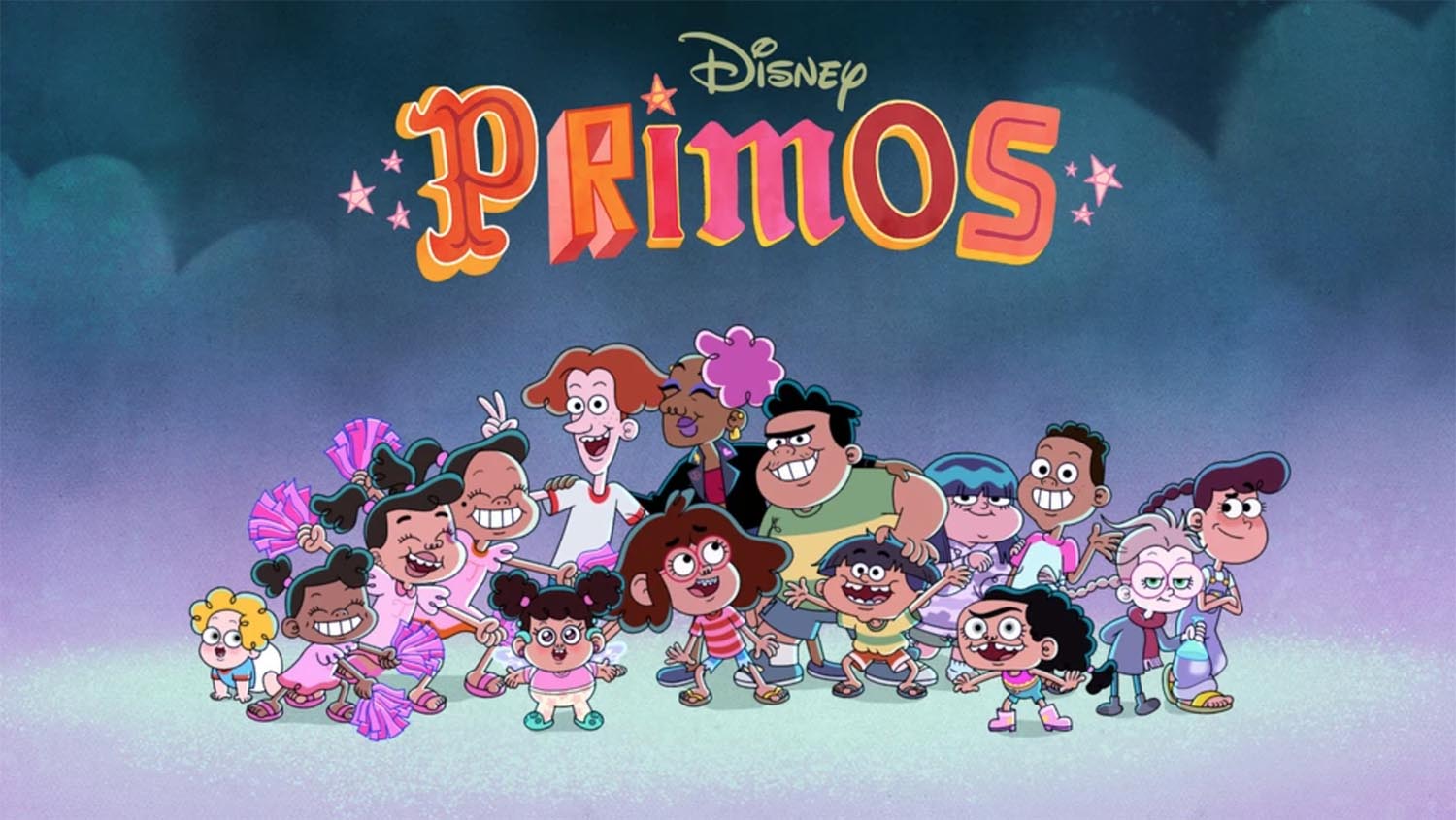
Were you the arbiter of where they fit in individual episodes?
Kline: Being able to fit them into the story, that was generally my call. I’m pretty involved in the writers’ room. From the very beginning, I was like, “Okay, here’s the moment where we have the song,” because this is the height of the emotion, or this is where we could have a montage, or things like that. Towards the end of the season, the writers were able to pick it themselves. But I guided it at first.
Were you storyboard driven in your writer’s room or script driven?
Kline: I’ve worked on script-driven things, and also board driven. It was interesting, because I liked working in both ways. Working both ways, I was able to see what the “lack” is. I feel like when you go strictly off of a script, you can be very confined to that script. But then in board-driven stuff, as a board artist, you have to come up with all the dialogue yourself. Oftentimes, you have to fix certain plot problems that you would have been able to see in the script stage. It leans too heavily on the board artists, I thought. But you do get that sparkling comedy and just random things happening from a board-driven show.
For my own production, I was interested in combining both parts of that process. When I was interviewing my writers, I just let them know that we’re going to be a script-driven show, but I would like you to be comfortable with the board artists being able to layer in their own comedy. And maybe adjusting certain plot devices, if they feel like they need to change things. Or, even like writing new micro-scenes to help bridge the gap between things. Once I let everybody know that that was going to be the vibe of the show, then they were fine with it. It actually kind of takes the pressure off of us a little bit, because we don’t have to write perfect things. Also, for the board artists, it was a great opportunity for them to let their own humor shine. I gave writing credit to a lot of the board artists because they added so much to certain episodes.
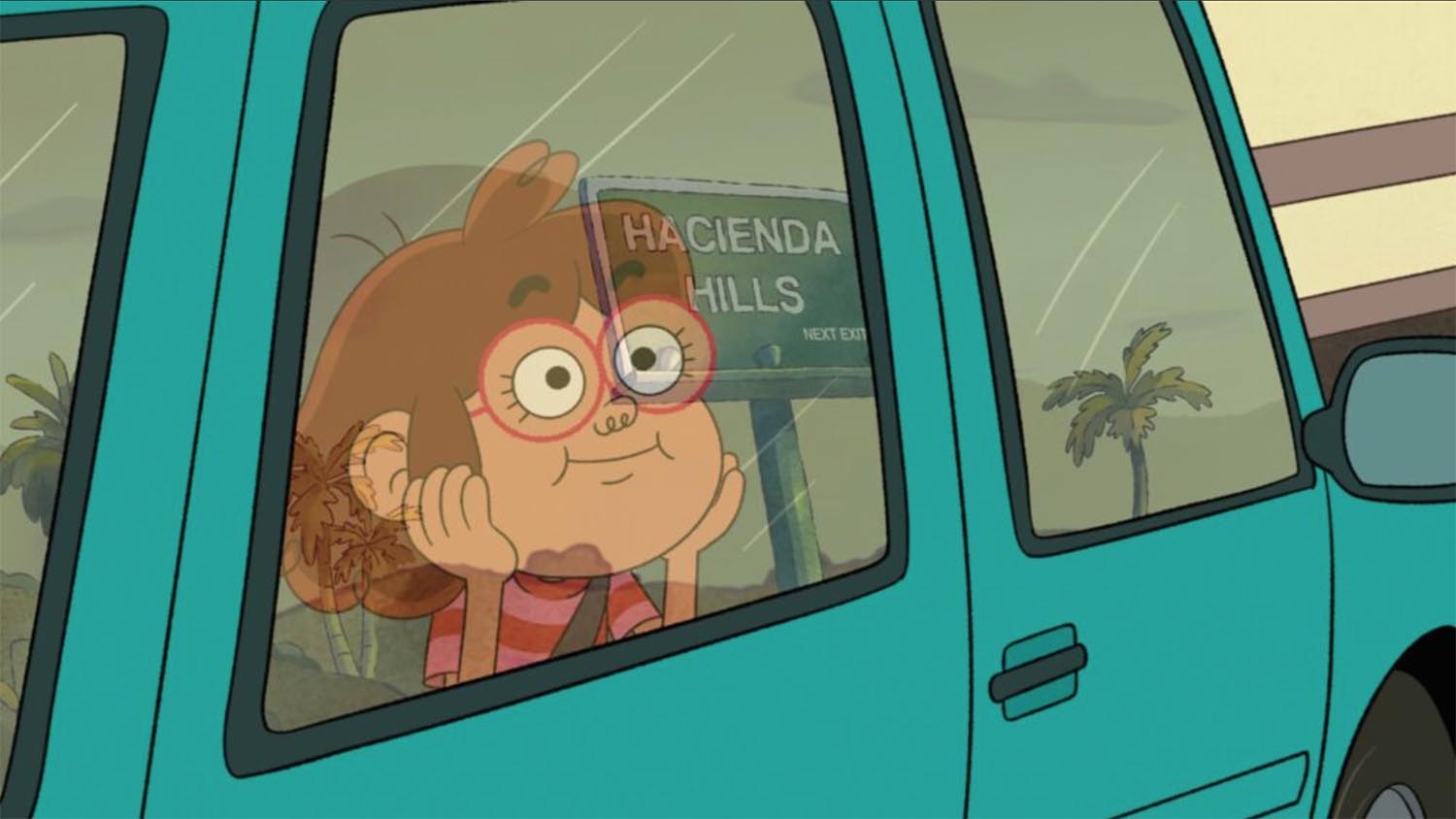
The idea was always to just make this huge collaboration, where every single part of the process adds like a new element of humor, or a new idea. Even at the very end, we’re still working on the final deliveries of season one. And even in post, it’s still this amazing collaboration where my supervising director will be like, “Okay, but what if they did it like this? And what if the fist was shaking like this?” We can still animate that to add more humor to it. So it’s been really fun.
What have you learned as a showrunner?
Kline: At the end of season one, it’s interesting to be looking back and thinking about myself when I first started the show, and how much I learned from it. There’s just so many challenges along the way of making the show that no one ever tells you about. Everybody has their own specific set of challenges to whatever show it is that they’re making, so no one can ever really properly warn you. But for me, my main challenge was being an introvert, and opening up and like talking about myself. I’m talking a lot right now.

